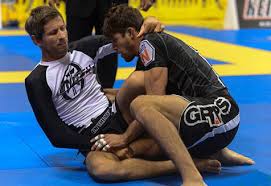Over the past couple of weeks, I had to do some moving things around and had to go through some storage boxes to see what could be tossed out and I came across a few of my training journals from years ago.
For the hell of it, I thumbed through a couple just to see how much I have changed (a lot, needless to say) but what was really interesting and fun to me was finding the entry for my first formal Brazilian Jiu-jitsu lesson from someone who actually knew jiu-jitsu. It was April of 1989. I had heard and seen a bit of BJJ in the martial art magazines prior to that, and I had just started to hear these vague rumors of the “Gracie Challenge” and a video that supposedly showed some of said challenges, but April ’89 was the first true hands on, legit training in it. Since that time I have continually trained to some degree in jiu-jitsu without a break. So officially over the thirty year mark!
I can hear my Professor now as he reads this – “maybe someday you will actually get good at it” LOL
It kind of boggles my mind that it has been that long, but what boggles my mind truly is that I am still learning things almost every time I step on the mat. There is always a new technique, a new way of doing something old, a new training drill, or just a detail that I had overlooked in a simple move in the thirty years prior. Just last week I was in Chicago and was exchanging ideas with Larry Lindenman, and we each had a money guard pass that started off exactly the same, but the actual pass was different. I had never seen his, and he had never seen mine. We both over the next week started doing the other guy’s move and so even as black belts, I am still learning. Outside of marriage, I don’t know of another activity that I can say that about after four decades of constant working.
Another example of how people can miss little details is last night in the Fundamentals class, I taught the kimura armlock. One of the most essential and foundational – and arguably, one of the most quintessential – attacks in jiu-jitsu. I quite literally taught every important detail about the move, and I showed everyone exactly how I set it up, how I controlled it, and how I finished it. I let them work it for about 20 minutes. And then later in Advanced class, I tapped multiple people out with the kimura, doing everything exactly like I showed, and it still worked. Because I understood the little things like timing, pressure, leverage, mechanics, positional control, and they did not to my extent, so I could use the exact move to still do precisely what I showed them I would do. I love that! I was the oldest on the mat by at least 10+ years, and most of the students were closer to 20+ years younger than I am, but I could still do what I needed to do, all because of the little things, and the depth and breadth of experience. I certainly could not do that playing basketball, or lifting weights, or most any other physical act.
Besides the day I got married and the days my kids were born, finding jiu-jitsu was probably the best day of my life.



